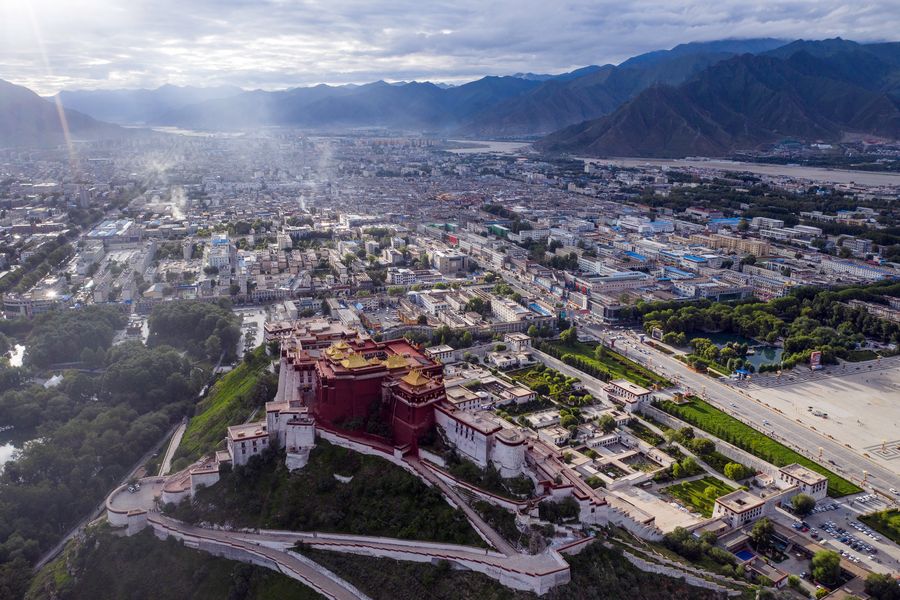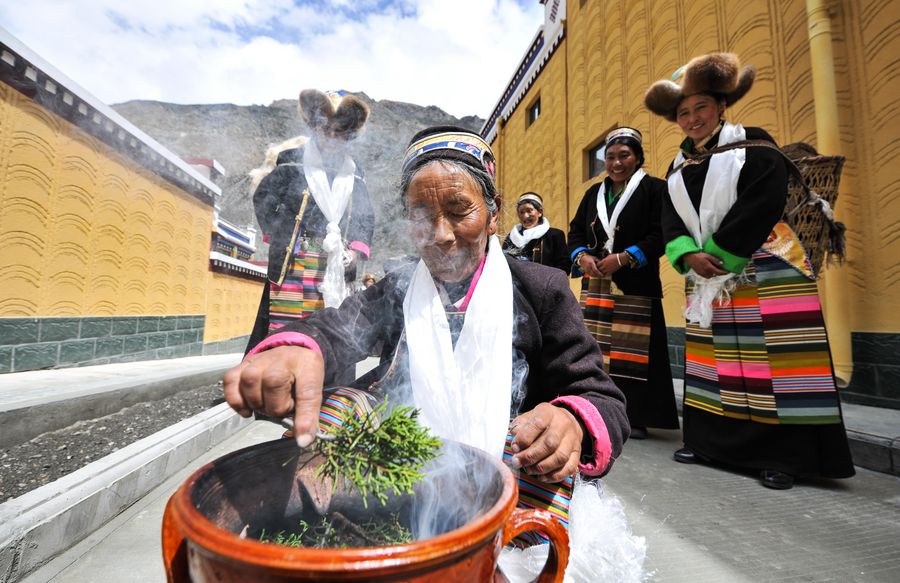
Photo taken on Aug. 10, 2019 shows the old town of Lhasa, capital city of southwest China's Tibet Autonomous Region. (Xinhua/Purbu Zhaxi)
The regional government has earmarked 8.6 billion yuan to initiate the construction of 26 characteristic towns and introduced foreign investment and social capital for the towns' development.
LHASA, Jan. 9 (Xinhua) -- The urbanization rate in southwest China's Tibet Autonomous Region has reached 32 percent, with over 1.07 million residents living in cities and towns, according to the regional housing and urban-rural development bureau.
The bureau said the regional government has pushed for the building of towns by developing their respective characteristics.
The regional government has earmarked 8.6 billion yuan (1.3 billion U.S. dollars) to initiate the construction of 26 characteristic towns and introduced foreign investment and social capital for the towns' development.

Dainzin Quzhen (front) holds a traditional rite in front of her new house in Lhozhag, Shannan, southwest China's Tibet Autonomous Region, Sept. 21, 2019. A total of 88 villagers from 28 households moved to their new two-story dwellings to improve housing conditions. (Xinhua/Jigme Dorje)
New towns such as Gyitang and Qucaika have been built by developing local cultural and tourist resources and nurturing industries of leisure tourism and border trade logistics.
Sonam Nyima, director of the bureau, said that the bureau will give priority to improve infrastructure and public service facilities in cities and towns and support the development of the "night economy" in the regional capital of Lhasa in the next step. ■



